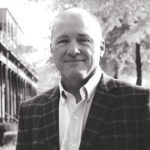By Michael C. Mack
Most of us can agree on a few facts about racial prejudice, division, and conflict. It’s real. It has existed in our culture and in our churches in the past. It persists today. And it will likely continue to be an issue for some time. Thank God, it will not exist in Heaven.
I think we’d all agree it’s wrong. It’s unbiblical. It’s definitely not Christlike.
Most of us know the Bible verses: Matthew 28:19; Galatians 3:28; Colossians 3:11; 1 John 4:8-11; Revelation 7:9; and others.
Many of us know something I didn’t. Most Restoration Movement church leaders, at least those Andy Daniell has talked to, desire to build more integrated, multiethnic congregations.
That’s all good news. I believe that today we are more aware of racial issues, and probably deny them less, than in the past. But while it’s good we’ve acknowledged the problem, we can’t stop there. So how do we take action and start making a difference in and through our churches?
Model Leaders
It begins with bold spiritual leaders who model a lifestyle of crossing cultural barriers, just as Jesus did. He broke cultural norms to love all people, not just those like him, and showed his disciples how to confront their societal prejudices, preferences, and presuppositions. As Matthew McBirth points out, “Jesus treated everyone as important, regardless of their race, ethnicity, gender, or class. Are we not to do the same?”
McBirth provides several helpful suggestions (see “The Value of Another Person’s Story in Resolving Racial Conflict in the Church”). He says, “At the root of racial frustration is the feeling that a story is not valued or even considered.” So, he says, it’s vital that we “strive to understand the story of other people instead of immediately jumping to conclusions.” That takes effort, intentionality, and commitment from leaders. And it takes vision and passion.
Fred Gray, the subject of Jerry Harris’s interview in our feature story this month (see “Interview with Fred Gray”), is such a leader. When asked to describe his call to help eliminate segregation from our nation, he said, “I realized everything was segregated and something needed to be done about it.” Jerry said he left the interview “with a desire to make a difference with whatever opportunities God puts before me.” I hope Gray’s story inspires more church leaders to do the same.
Dudley Rutherford, senior pastor of Shepherd Church (www.theshepherd.org), is another good example. In a June 2016 Christian Standard article, “We Have a Dream,” he said, “It became the burden of my heart to help lead the charge to correct this glaring blind spot [of a lack of racial diversity in our churches].” Rutherford’s burden led him to found Dream of Destiny (www.dreamofdestiny.com), which exists to “lead, teach, and mentor pastors, churches, colleges, universities, ministry leaders, and laymen to be more intentional in fostering diversity and inclusion in their particular ministry.”
Model Churches
Shepherd Church has been called “the most racially diverse church in Los Angeles” by the city’s mayor. They are but one of the churches in our tribe taking strides in the right direction.
Andy Daniell discusses the steps First Christian Church of Mableton, Georgia, has taken to move from single-digit minority representation on Sunday mornings to a consistent minority attendance in the 39 to 54 percent range. Read his article, “Building an Integrated Church,” to see how they have become more integrated.
Cloud Church, a two-year-old church plant in Irvine, California, led by pastor Jason Aguilar, is another example. Mel McGowan discusses how this church is “reconciling people groups to one another and loving them no matter where they come from” (see “Cloud Church”).
This all makes me wonder. What would happen if our culture looked to the church as the place that crosses racial and other societal divides and radically loves people as no other element of society can? What if the church led the way and modeled racial reconciliation for the rest of the world?


0 Comments